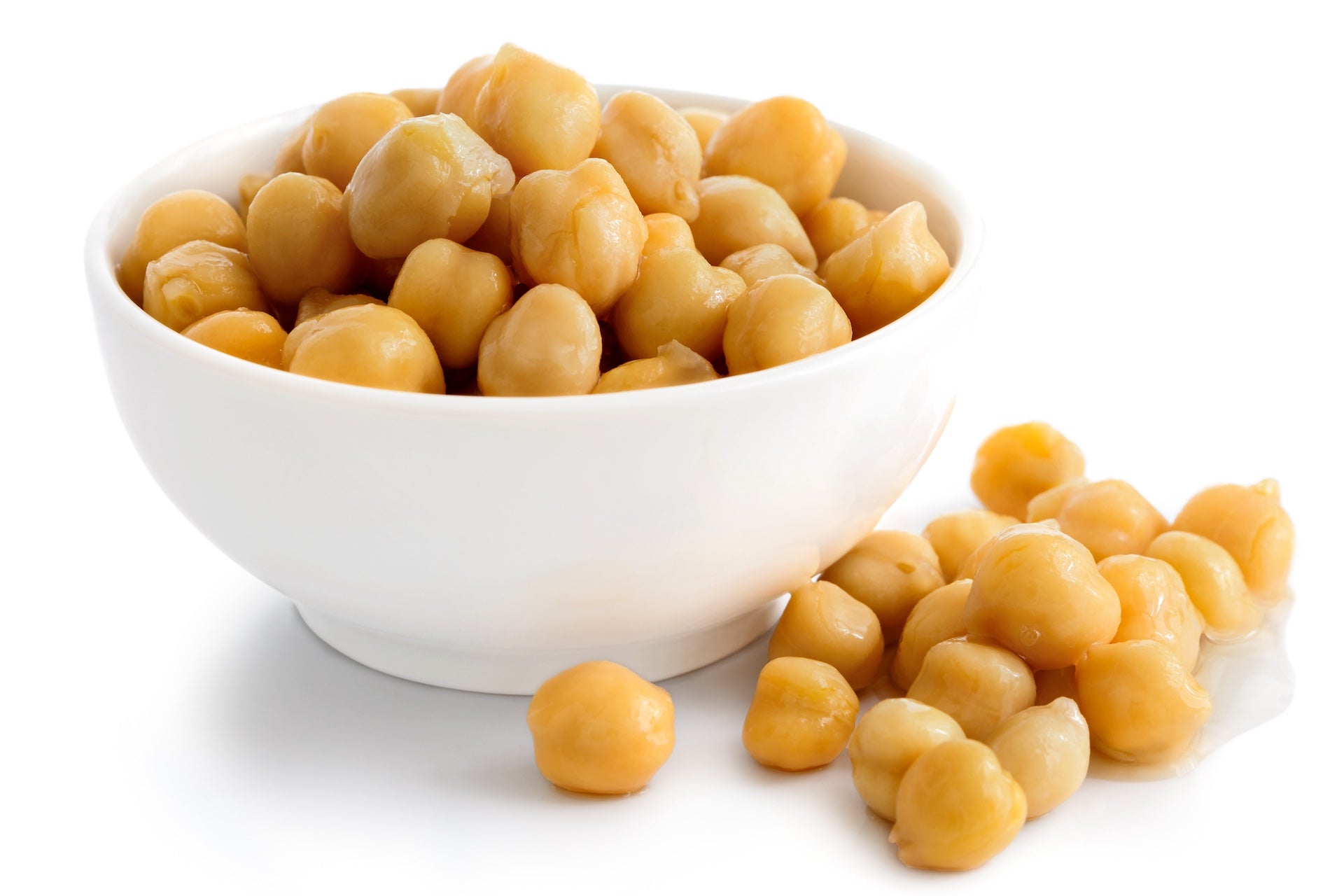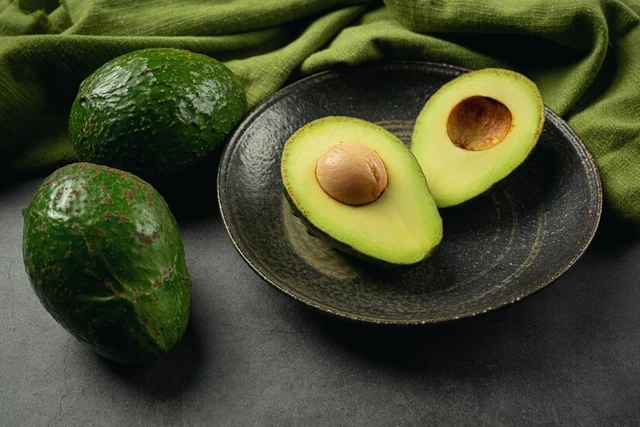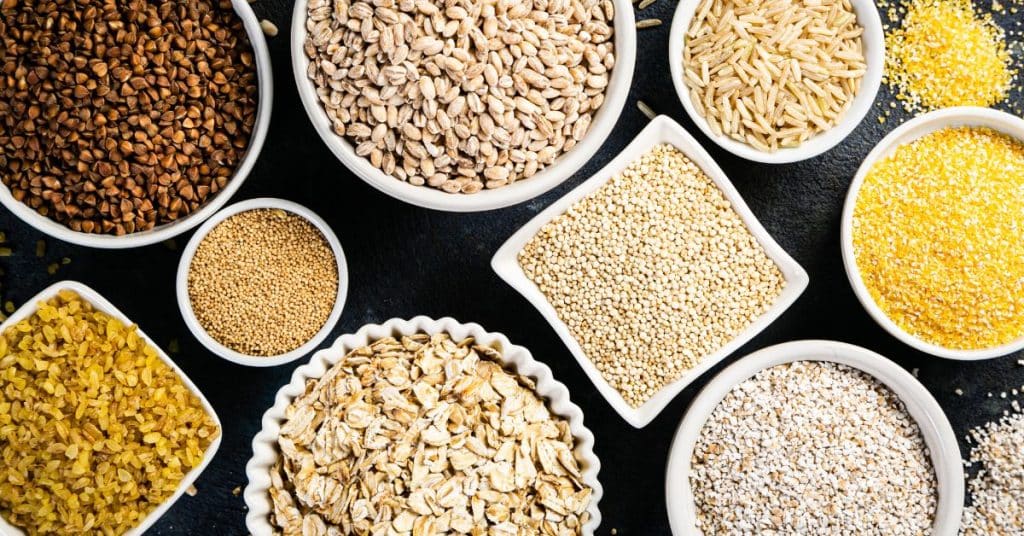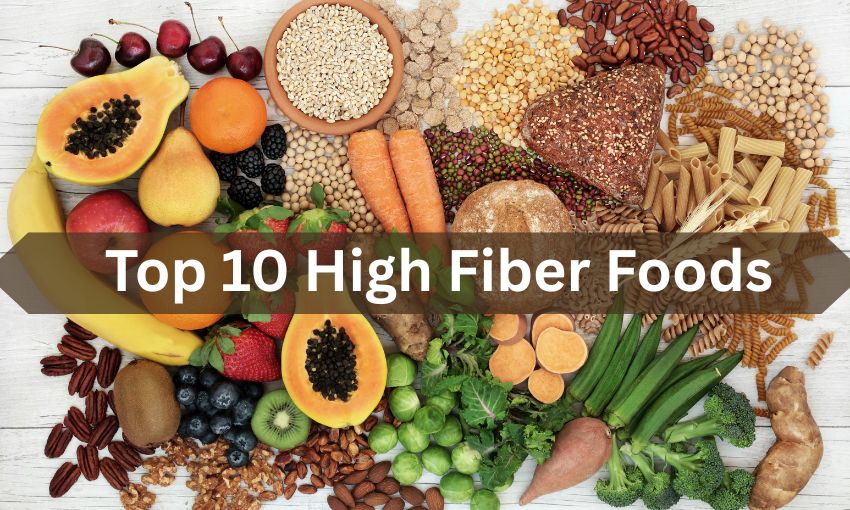Introduction
Good health starts with what you eat every day. One of the simplest ways to stay healthy is by adding high fiber foods to your diet. Fiber is like a broom for your digestive system—it cleans out waste, supports gut health, and keeps you feeling light and energetic.
Whether you want to lose weight, improve digestion, or reduce constipation, the secret lies in choosing the highest fiber foods.
In this article, we’ll look at the top 10 high fiber foods, explain their benefits, and share a helpful high fiber foods chart for constipation so you can plan your meals easily. Let’s get started.
Why Fiber Is So Important
Fiber is a type of carbohydrate that the body can’t fully digest. Unlike other carbs that turn into sugar, fiber passes through your digestive system and helps keep it clean and healthy.
There are two main types of fiber:
- Soluble fiber – dissolves in water and helps lower cholesterol and control blood sugar.
- Insoluble fiber – adds bulk to your stool and helps prevent constipation.
Eating high fiber foods every day can:
- Improve digestion and prevent constipation
- Support weight management by keeping you full longer
- Lower cholesterol levels
- Control blood sugar
- Boost overall gut health
Now, let’s discover the highest fiber foods that can transform your daily diet.
Top 10 High Fiber Foods-Lentils
1. Lentils
Lentils are small, protein-packed legumes that are among the highest fiber foods you can eat.

- Fiber Content: About 7–8 grams per ½ cup cooked
- Benefits: Rich in iron, protein, and folate, lentils help in energy production and better digestion.
- Easy Tip: Add them to soups, curries, or salads for a hearty meal.
2. Chickpeas (Garbanzo Beans)
Chickpeas are one of the most popular high fiber foods for vegetarians.

- Fiber Content: About 6–7 grams per ½ cup cooked
- Benefits: They improve heart health and help manage weight.
- Easy Tip: Try roasted chickpeas or make homemade hummus for a tasty snack.
3. Raspberries
When it comes to fruits, raspberries top the high fiber foods chart for constipation.

- Fiber Content: Around 8 grams per cup
- Benefits: Helps regulate digestion and boosts immunity due to high vitamin C.
- Easy Tip: Add them to smoothies, oatmeal, or yogurt.
4. Avocado
Avocado isn’t just about healthy fats—it’s also full of fiber.

- Fiber Content: Around 7–10 grams per fruit
- Benefits: Keeps your skin glowing, your heart strong, and your digestion smooth.
- Easy Tip: Spread avocado on toast or use it in salads and wraps.
5. Artichoke
Artichoke is a hidden gem among highest fiber foods.

- Fiber Content: 9–10 grams per cooked artichoke
- Benefits: Helps reduce cholesterol and promotes a healthy gut.
- Easy Tip: Steam, grill, or bake artichokes for a light, tasty side dish.
6. Whole Grains (Oats, Barley, Brown Rice, Whole-Wheat Pasta)
Whole grains are staple high fiber foods that everyone should include daily.

- Fiber Content: 5–14 grams per serving, depending on type
- Benefits: They support heart health and give long-lasting energy.
- Easy Tip: Swap white rice for brown rice or regular pasta for whole-wheat pasta.
7. Beans (Black, Kidney, Pinto)
Beans are a must in every high fiber foods chart for constipation.

- Fiber Content: 7–9 grams per ½ cup cooked
- Benefits: Beans are rich in protein, potassium, and antioxidants.
- Easy Tip: Add beans to soups, burritos, or salads.
8. Sweet Potatoes
Sweet potatoes with skin are among the highest fiber foods for gut health.

- Fiber Content: About 6 grams per cup cooked
- Benefits: They aid in digestion and provide vitamin A for better vision.
- Easy Tip: Bake or roast sweet potatoes with the skin for maximum fiber.
9. Broccoli
Broccoli is one of the easiest high fiber foods to add to your daily meals.

- Fiber Content: Around 5 grams per cup cooked
- Benefits: It supports detoxification, boosts immunity, and helps digestion.
- Easy Tip: Steam or stir-fry broccoli and pair it with your favorite dishes.
10. Chia Seeds and Flax Seeds
These tiny seeds are full of nutrition and among the highest fiber foods.

- Fiber Content: About 4–5 grams per tablespoon
- Benefits: Excellent for relieving constipation and supporting heart health.
- Easy Tip: Add them to smoothies, yogurt, or salads.
High Fiber Foods Chart for Constipation
| Food Item | Serving Size | Fiber (Approx.) |
| Lentils | ½ cup cooked | 7–8g |
| Chickpeas | ½ cup cooked | 6–7g |
| Raspberries | 1 cup | 8g |
| Avocado | 1 medium | 7–10g |
| Artichoke | 1 cooked | 9–10g |
| Whole Grains (Oats/Barley) | ½ cup | 7–14g |
| Beans (Black/Kidney) | ½ cup | 7–9g |
| Sweet Potato (with skin) | 1 cup cooked | 6g |
| Broccoli | 1 cup cooked | 5g |
| Chia/Flax Seeds | 1 tbsp | 4–5g |
These foods make the high fiber foods chart for constipation because they soften stool, make bowel movements regular, and relieve digestive discomfort naturally.
Tips to Add More Fiber to Your Diet
- Start your morning with oatmeal or a fiber-rich cereal.
- Include lentils or beans in one meal daily.
- Snack on fruits instead of chips or biscuits.
- Choose brown rice over white rice.
- Keep nuts and seeds handy for quick snacks.
- Add veggies like broccoli or spinach to every meal.
- Drink plenty of water—it helps fiber work better.
- Increase fiber slowly to avoid bloating or gas.
Benefits of Eating High Fiber Foods
- Promotes healthy digestion and prevents constipation
- Keeps you full for longer, reducing unnecessary snacking
- Improves heart health and lowers cholesterol
- Helps regulate blood sugar levels
- Aids in maintaining a healthy weight
- Supports the growth of good bacteria in your gut
10 FAQs about High Fiber Foods
- What are high fiber foods?
Foods rich in dietary fiber such as fruits, vegetables, beans, legumes, and whole grains are known as high fiber foods. - How much fiber do I need daily?
Men should aim for about 35 grams per day and women for about 25 grams per day. - Can fiber help with constipation?
Yes, eating from the high fiber foods chart for constipation helps relieve constipation naturally. - Are fruits a good source of fiber?
Yes, fruits like apples, bananas, and berries are excellent sources of fiber. - Is too much fiber bad for you?
Too much fiber without enough water can cause bloating, so always drink plenty of fluids. - Do children also need high fiber foods?
Yes, but their fiber needs are smaller. Fruits, veggies, and whole grains are best for kids. - Can fiber help in weight loss?
Yes, fiber keeps you full longer, helping reduce hunger and calorie intake. - Are fiber supplements as good as natural fiber?
Natural highest fiber foods are always better because they provide vitamins and minerals too. - Can I eat high fiber foods every day?
Absolutely! Daily fiber intake improves overall health and supports long-term wellness. - How soon can I see results after increasing fiber?
Usually, within a few days you’ll notice better digestion and more regular bowel movements.
Conclusion
Adding highest fiber foods to your meals is one of the easiest ways to stay fit and healthy. Whether it’s lentils, chickpeas, or chia seeds, these natural sources of fiber can improve your digestion, relieve constipation, and keep your gut happy.
Use the high fiber foods chart for constipation as your daily guide and gradually increase your intake. Remember — small, consistent changes bring long-lasting results. Eat smart, stay hydrated, and let fiber do the magic for your body!
